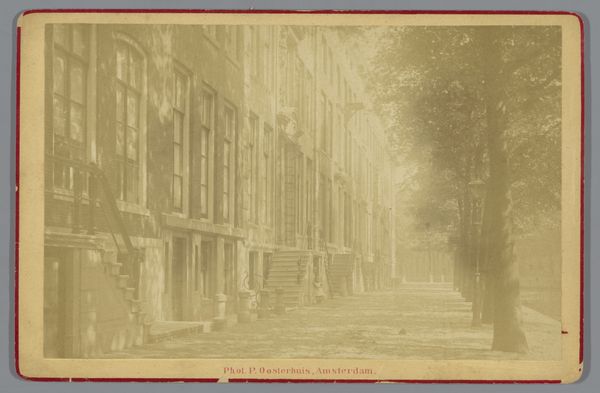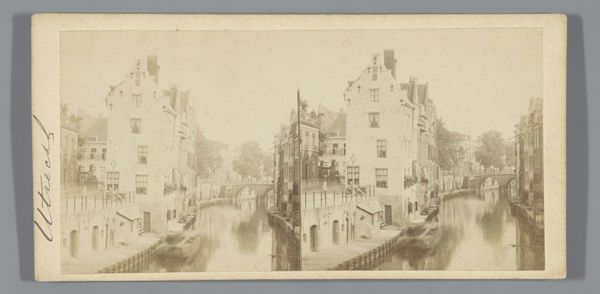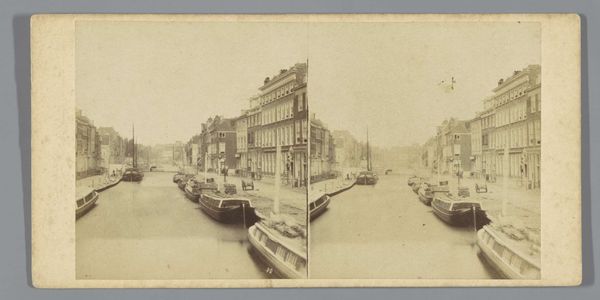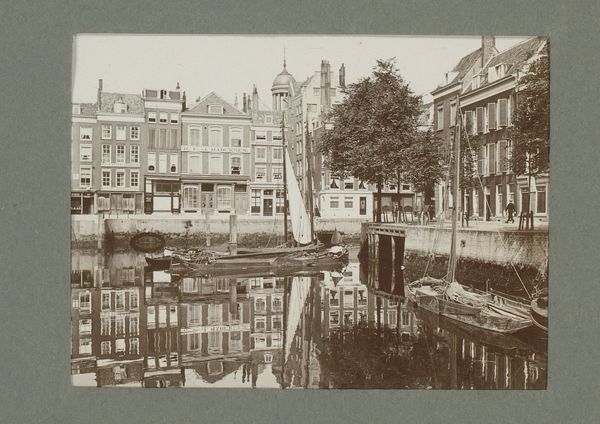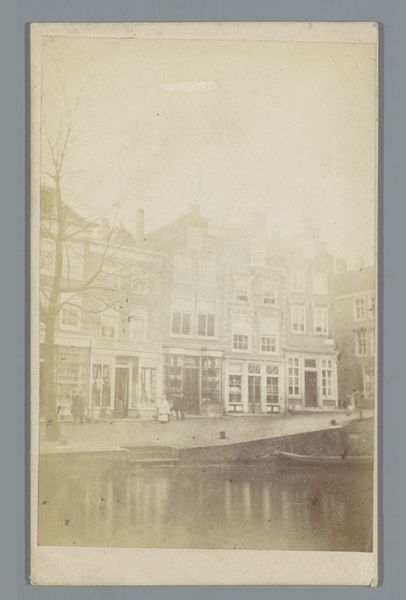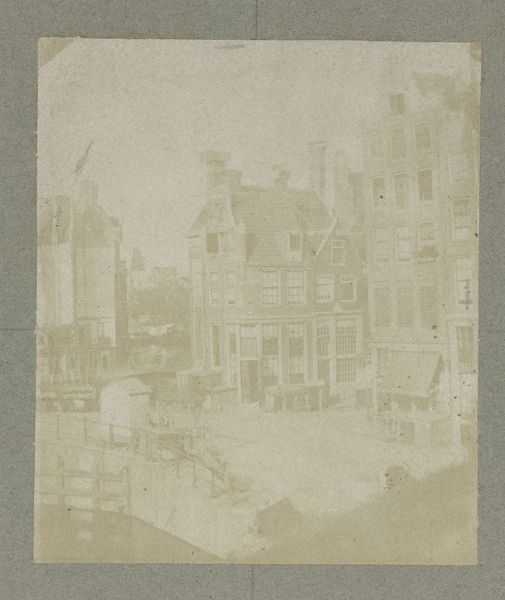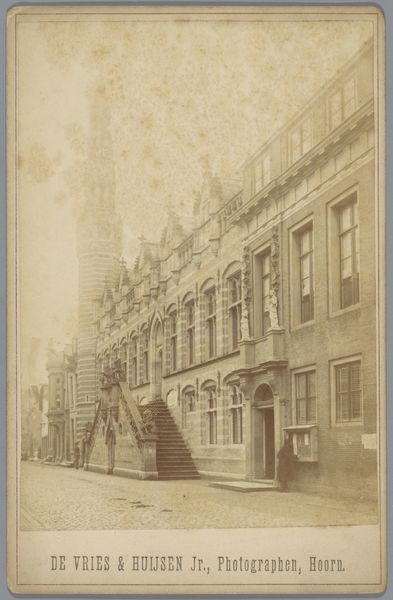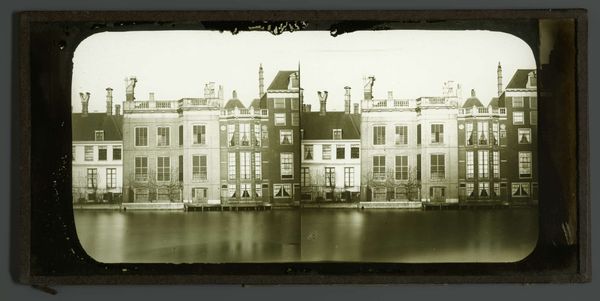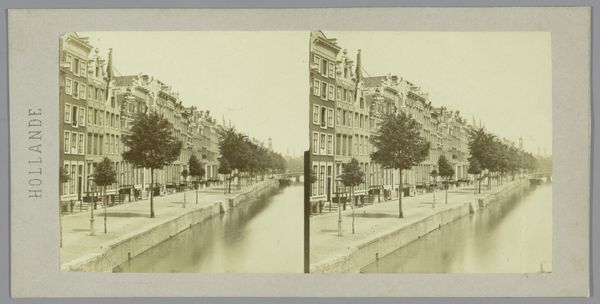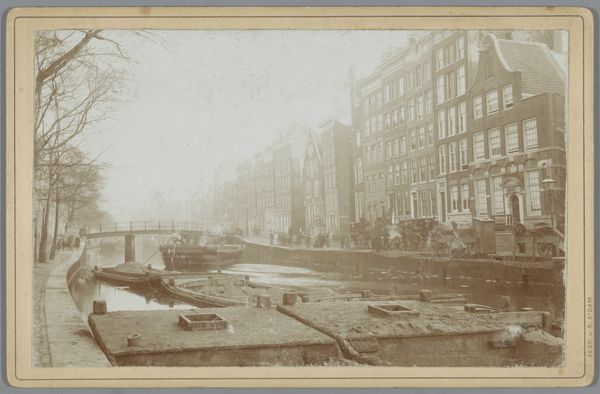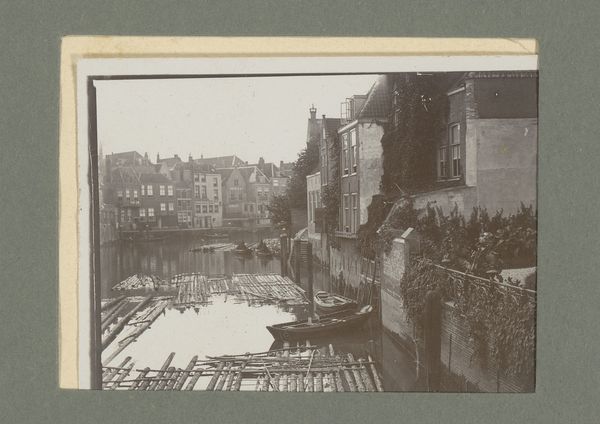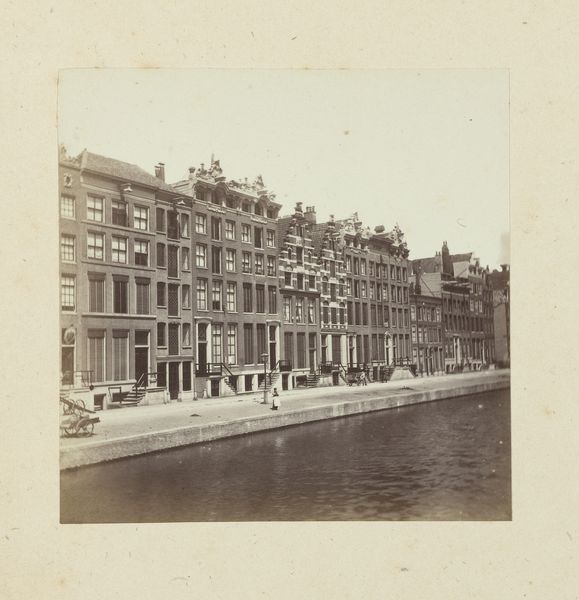
photography, gelatin-silver-print
#
landscape
#
photography
#
gelatin-silver-print
#
cityscape
#
realism
Dimensions: height 84 mm, width 173 mm
Copyright: Rijks Museum: Open Domain
Editor: Here we have Pieter Oosterhuis’s "Huizen met tuinen aan de Oppert, Rotterdam," a gelatin silver print made sometime between 1859 and 1865. There's something serene about this cityscape, a feeling of stillness despite it being an urban environment. What strikes you most about this work? Curator: For me, it's about understanding this photograph as a *thing*, produced through specific labor and materials. Look at the gelatin silver print—consider the industrial processes required to manufacture both the photographic paper and the chemicals for developing it. The very availability of these materials signals a shift in photographic practice, away from more artisanal methods. Editor: So, you're saying the materials themselves tell a story? Curator: Precisely! The smoothness and reproducibility afforded by gelatin silver, a contrast to earlier, more handcrafted photographic processes, highlights a shift towards mass production. Also, look at what is represented. These are not grand monuments, but ordinary houses. How does the choice of subject matter also speak to the democratization of art and image-making during this period? What might Oosterhuis be suggesting about the nature of "the good life"? Editor: That's a really interesting point. Focusing on ordinary housing could also suggest a rising middle class and their access to new technologies. Did that newfound wealth support artists like Oosterhuis? Curator: It likely influenced his practice and subject matter. He catered to a growing market interested in seeing their own world represented through these accessible images. It is through examining the production and distribution that we glean insight. How did the marketplace value images such as these? Editor: It’s amazing how thinking about materials and social context changes the way I see the picture. I'm so used to just considering the aesthetic. Curator: Exactly! We can appreciate the image's surface while digging into its material and historical depth. Examining these aspects enriches our experience.
Comments
No comments
Be the first to comment and join the conversation on the ultimate creative platform.
